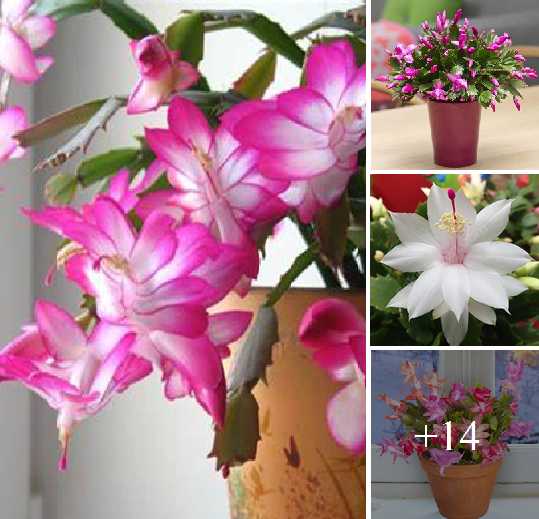
Stores are abundant with blooming Christmas cacti during the holiday season, showcasing a variety of colors such as red, pink, yellow, orange, white, or purple. Most people can’t resist buying one or more in exotic shades, but the real challenge lies in making it thrive and bloom for many years to come. The plant is commonly called Christmas cactus, Thanksgiving cactus, holiday cactus, or crab cactus. It gets its name from the leaf-shaped stem segments that resemble claws or teeth along the edges. Easter cactus, on the other hand, has rounded edges on its leaf segments. All these cacti originate from the southeastern coast of Brazil, where they grow as epiphytes in shady, humid forests.
Despite being classified as a cactus, the Christmas cactus requires different care than its desert counterparts because it is a forest cactus. Its care needs are based on its origin. The plant prefers to be “pot bound,” which means leaving it in a small container for as long as possible before moving it to a slightly larger pot. It also prefers a rich, organic potting mix and should never be allowed to dry out. During blooming season, water the plant more frequently. Bright, indirect light is best for Christmas cactus, while full sun can burn the leaf segments and cause them to turn dark red.
The key factors in making the Christmas cactus bloom again after its initial purchase are light and temperature. The plant produces flowers in a cool, environment-short day cycle. To initiate flower bud production, the plant must receive at least eight days of 16 hours of darkness and eight hours of light each day. Never turn on the lights at night, as this breaks the required dark cycle. The ideal temperature for the plant is around 61 degrees Fahrenheit, and it should not be exposed to cold or hot air. Placing the plant on a cool windowsill without turning on the lights can meet these requirements.
If the plant sets flower buds and then falls off, it is likely due to too much or too little water or a lack of air. However, Christmas cacti are generally considered easy to rebloom if their temperature and light requirements are met. With proper care, you might even be able to pass on a giant, magnificent Christmas cactus to your heirs.





















